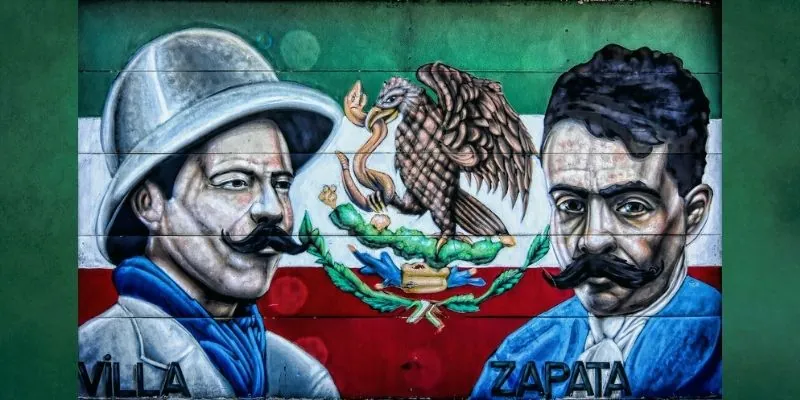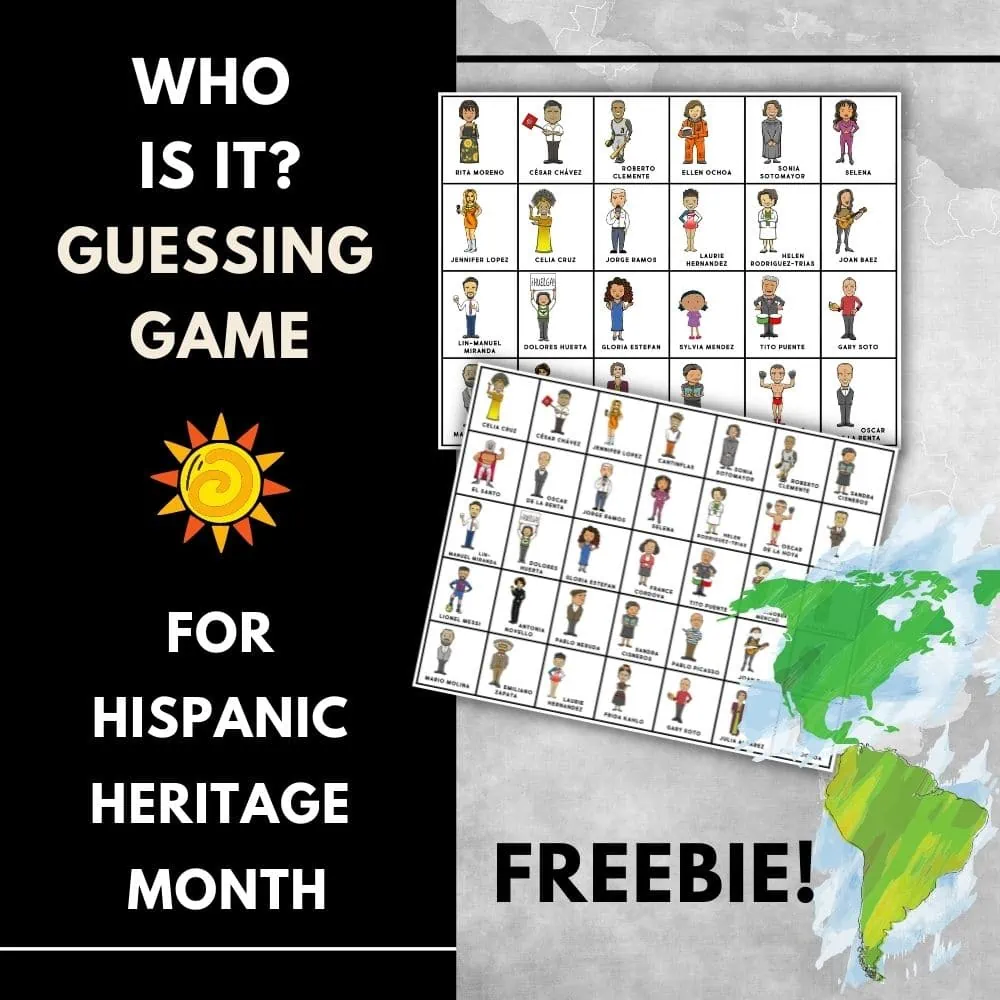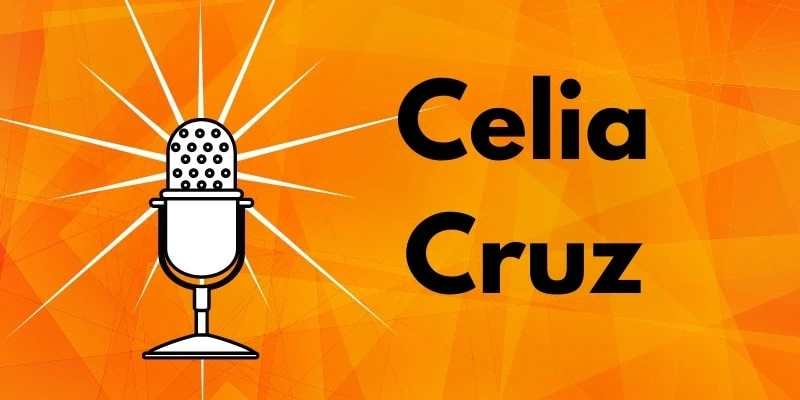Emiliano Zapata, Pancho Villa Biographies and Lesson Plans
Inside: Learn about Emiliano Zapata Pancho Villa, their role in the Mexican Revolution, and resources for learning more.
(Above image modified from ““Villa and Zapata” (CC BY-NC-ND 2.0) by Atelier Teee.)
Against the backdrop of the Mexican Revolution, two leaders emerged to end the 35-year dictatorship of Porfirio Díaz and change Mexico forever.
Born a year apart, both rose from humble beginnings in families that were campesinos — people who worked the land.
Though both had a limited education and neither held political ambitions, their legendary status threatened those in power. Both men were eventually assassinated, four years apart from the other.
Emiliano Zapata was passionate about land reform and led a group of soldiers called the Southern Liberation Army. He is held up an icon of the common worker and defender of the poor.
Pancho Villa was a guerrilla fighter and led the Northern Division of soldiers. Somewhat shrouded in mystery and legend, “He is seen as a Robin Hood, bandit, killer, womanizer, and since 1812, the only foreigner to have invaded, attacked, and killed Americans inside our borders.” (Laits University of Texas)
The paths of Zapata and Villa first crossed during the Mexican Revolution, with the ousting of Díaz and the turnover of several leaders after that.
This post takes a look a each man’s main life events, with resources for learning more.
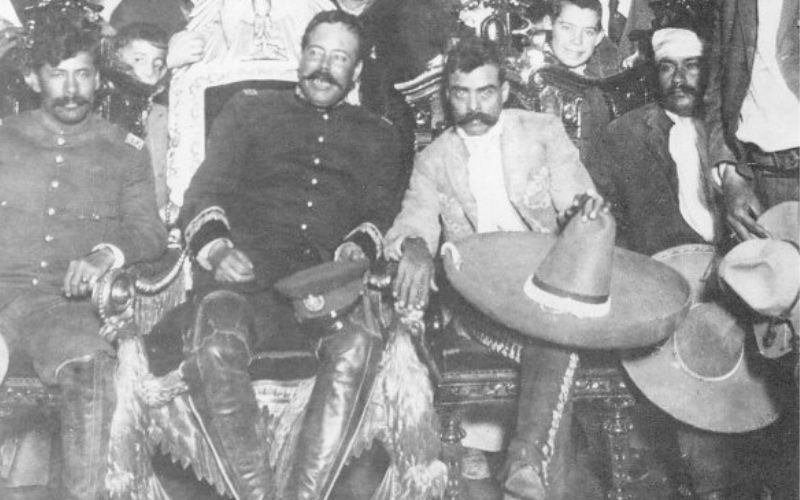
Related: Famous Latinos & Hispanic Americans Home Page
Emiliano Zapata Pancho Villa Resources
Here’s an index of what’s included in the post. You can click on any link to jump straight to that section:
- Quick Facts about Emiliano Zapata, Pancho Villa
- Emiliano Zapata Biography
- Pancho Villa Biography
- Lesson Plans for Students to Learn More
- Emiliano Zapata Pancho Villa YouTube Videos
Emiliano Zapata Pancho Villa Quick Facts
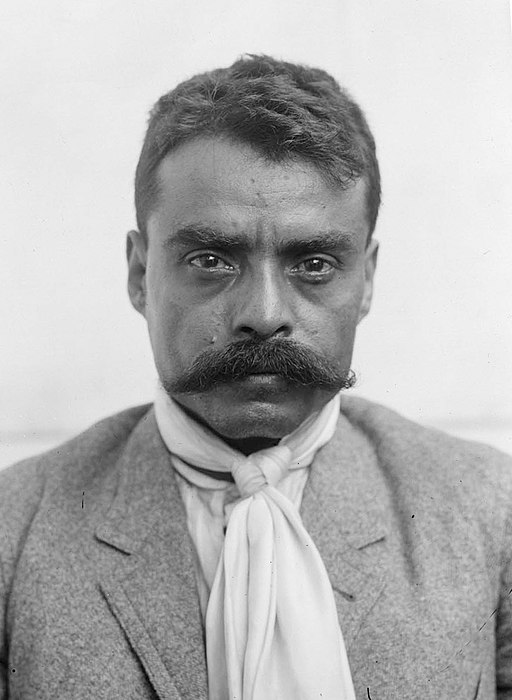
Emiliano Zapata
Birth: August 8, 1879
Death: April 10, 1919
Spouse(s): Josefa Espejo, 1 child together (Paulina)
Children: Paulina Ana María Zapata Portillo,Carlota Zapata Sánchez, Diego Zapata Piñeiro, Elena Zapata Alfaro, Felipe Zapata Espejo, Gabriel Zapata Sáenz, Gabriel Zapata Vázquez, Guadalupe Zapata Alfaro, Josefa Zapata Espejo, Juan Zapata Alfaro, Luis Eugenio Zapata Sáenz, Margarita Zapata Sáenz, María Luisa Zapata Zúñiga, Mateo Zapata, Nicolás Zapata Alfaro, Ponciano Zapata Alfaro
Profession: Horseman, soldier
Famous For: Fighting for fair land rights for peasants, guerrilla leader in the Mexican Revolution and commander of the Liberation Army of the South.
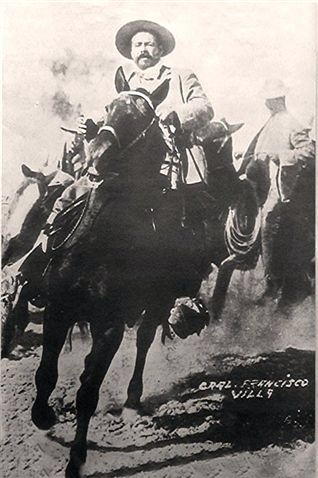
Pancho Villa
Birth: June 5, 1879
Death: July 20, 1923
Spouse(s): María Luz Corral (Villa is reported to have married many other times, but Corral is the one marriage on record.)
Children: One daughter with Maria Luz Corral, who died in infancy. Various other children from outside his marriage.
Famous For: Being one of the top military leaders during the Mexican Revolution.
Emiliano Zapata Biography
“Better to die standing up than live your whole life kneeling.”
– Emiliano Zapata (sometimes attributed to
Emiliano Zapata Early Life and Family
Emiliano Zapata was born August 8, 1879 in Anenecuilco, Mexico. He was born into a family that worked with horses.
At the time, there was a sharp division between landowners and the peasants who worked for them.The Zapatas were part of the working class, but did own a small piece of land and were able to have a slightly better life. At 17, his parents died.
In 1897, Zapata’s life changed. He was arrested for participating in a protest over land rights, and drafted into the army. After only serving for six months, he was discharged to help train horses.
In 1909, local villagers elected Zapata president of the board of defense, to defend their land rights. Initially, he tried to restore the peasant’s land from the landowners through legal means. When that failed, they took up arms.
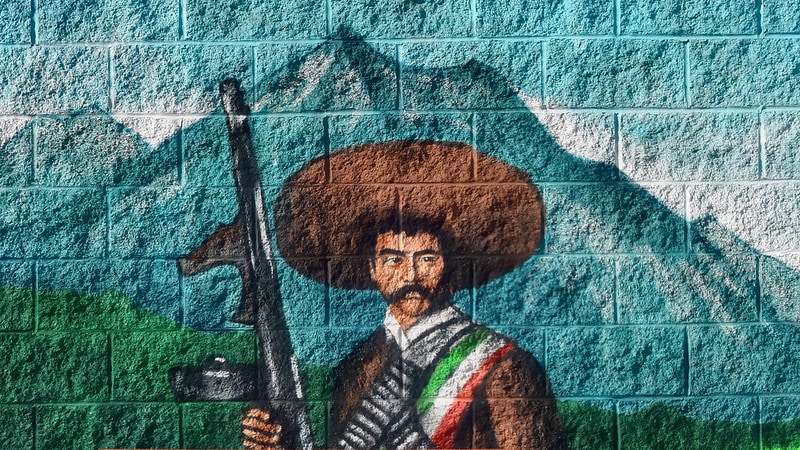
The Mexican Revolution
In 1910, Porfirio Díaz won a rigged election and his opponent, Fransico Madero, was exiled.
Zapata joined Madero’s side and organized an army of peasants in the southern state of Morelos, to fight against Díaz’s government. Zapata and his soldiers captured the city of Cuautla in 1911, causing Díaz to exile himself.
Emiliano Zapata had joined Madero with the goal of land reform. It soon became clear that Madero did not take this seriously or plan to fulfill his promises. Zapata then turned against Madero as well, writing his Plan of Ayala and naming Pascual Orozco leader of the revolution.
In a twist of fate, a Mexican general named Victoriano Huerta killed Madero before Zapata could. Huerta– known for his cruelty and violence– was hated by the revolutionaries.
Four of the leaders came together to fight Huerta, the “Big Four”– a group that included both Emiliano Zapata and Pancho Villa. Once Huerta was gone, there was infighting in the group.
Emiliano Zapata Death and Legacy
Carranza, one of the “Big Four,” wanted Zapata gone. He sent one of his generals to lead a group to ambush and kill Zapata. On April 10, 1919, Zapata was killed by Colonel Jesús Guajardo. He was 39 years old.
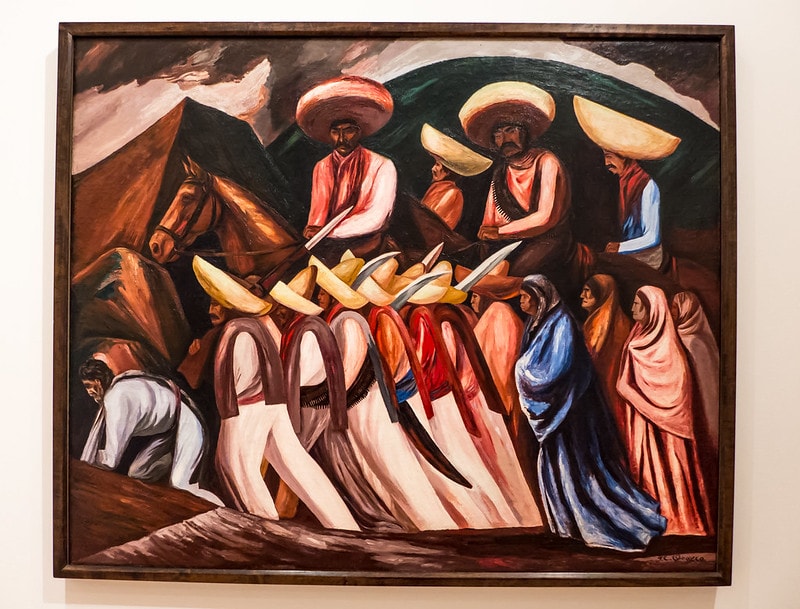
Emiliano Zapata’s legacy endured beyond his own lifetime, as often happens when a charismatic leader dies young. His untimely passing eventually sparked a small movement to carry on his ideals of land reform and protection for farmers.
Those who follow him are often called “zapatistas,” or the Ejército Zapatista de Liberación Nacional. Zapata was memorialized by Diego Rivera himself, in a portrait in 1932.
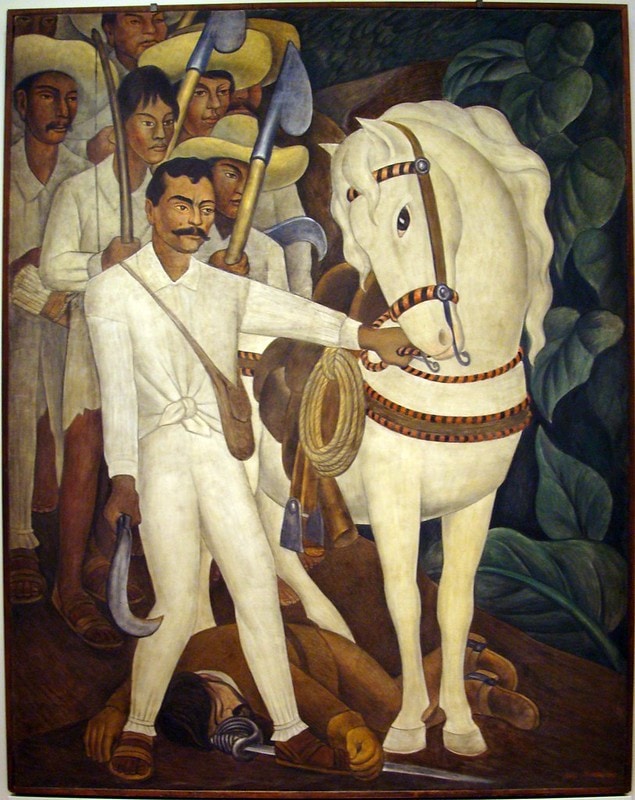
Pancho Villa Biography
Pancho Villa Early Life and Family
Fransisco Villa, nicknamed Pancho Villa, was born June 5, 1878, in Dorango, Mexico. His given name at birth was actually José Doroteo Arango Arámbula.
Villa was born into a family of field laborers, but lost both of his parents young. When his sister was assaulted, he sought revenge by killing one of their employers. As a result, he spent his teenage years hiding in the mountains.
The Mexican Revolution
When the Mexican Revolution began in 1910, Villa aligned himself with the rebel Francisco Madero. He proved useful as a leader who knew the terrain and Madero became the new president.
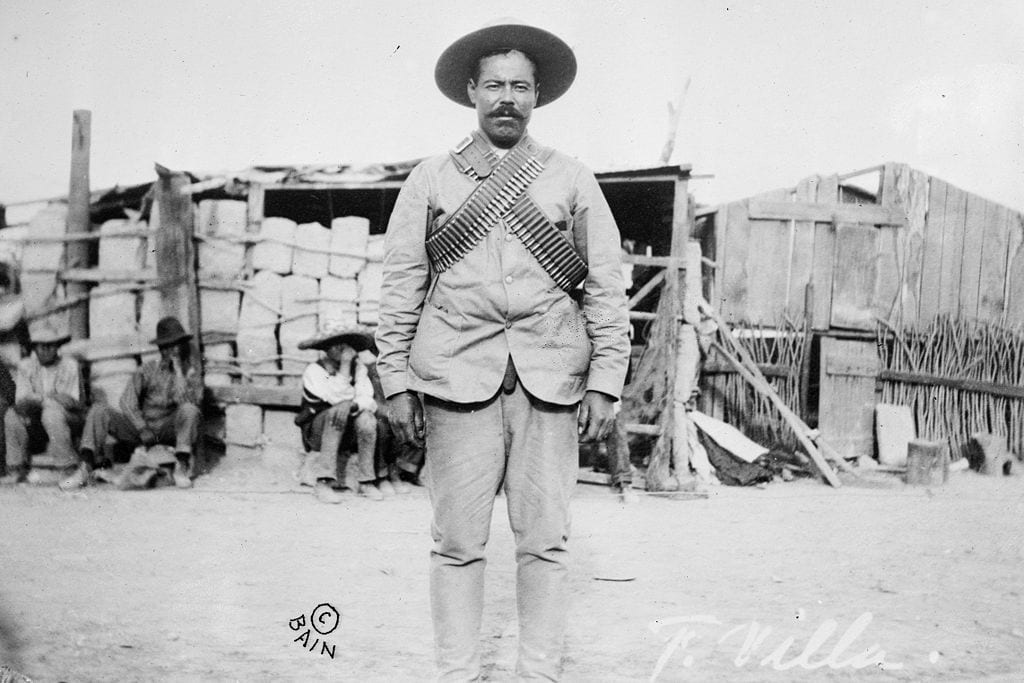
However, in 1912, Pascual Orozco led a rebellion against Madero. Madero suspected Villa and sent him to prison. Villa escaped, fled to the United States, and returned to Mexico in 1913 when Madero was assassinated and replaced by General Huerta.
At this time, Villa formed a military group, the División del Norte. Together with Venustiano Carranza, Villa fought against Huerta and they took Mexico City in 1914. During this time, he also became governor of Chihuahua.
After a falling out with Carranza, Villa fled to the mountains with Emiliano Zapata. He avoided capture until the end of Carranza, in 1920, and was granted a pardon. His return to society, however, was short-lived.
Pancho Villa Death and Legacy
Pancho Villa was assassinated by a government-backed order in 1923, at the age of 45. Although Villa reportedly had no presidential ambitions himself, the president feared his powerful presence and popularity was a threat.
The legacy of Pancho Villa is a mixed one. Some see him as a sort of rogue Robin Hood character, and others condemn the violence he regularly utilized.
Learn more about through these 25 Pancho Villa quotes that gives us a peek into his view of himself, Mexico, politics, war, and more.
Printables and links to learn more
Free Resources:
- Younger students can color this free printable
- Students can learn more about the Mexican Revolution through the film The Storm that Swept Mexico, with lesson plans from PBS.
- You can access an extensive lesson plan for high schoolers on the Mexican Revolution here.
- School for Chiapas has an extensive database of lessons, worksheets, and comprehensible videos in Spanish that cover topics like: ¿Quienes son las zapatistas?, a comparison of Emiliano Zapata and Malcom X, women in the movement, and more.
Zapata, Villa Biography Videos
If you plan to use these videos with students, do keep in mind that they cover violent stories and may include brief graphic scenes. Please preview before showing in class!
This is a good overview of Zapata and his historical context, in Spanish (6min 33s).
This quick into to Emiliano Zapata doesn’t go into his life story, but is excellent for describing why we remember Zapata and what his legacy is (1min 7s):
Longer biography of Emiliano Zapata (27min 57s):
Excellent biography of Francisco (Pancho) Villa in Spanish (7min 12s):
For a more in-depth look at Pancho Villa– and his controversial legacy– try this longer overview of his biography. Do be aware that rape is mentioned in this video. (19min 58s):
I hope these quotes and resources were helpful to you! If you have more ideas for resources or lessons, let me know in the comments below!
Image Credits:
Image 2: ““Pancho Villa y Emliano Zapata” (CC BY-SA 2.0) by LALO VAZQUEZ
Image 3: “Emiliano Zapata ”Tierra y Libertad”” (CC BY-SA 2.0) by LALO VAZQUEZ
Image 4: “Mexican Revolutionary Emiliano Zapata” (CC BY-NC-ND 2.0) by Atelier Teee
Image 5: “Zapatistas” (Public Domain) by Thad Zajdowicz
Image 6: “Agrarian Leader Zapata” (CC BY-NC 2.0) by IslesPunkFan
Image 7: “Pancho Villa and Emiliano Zapata” (CC BY-NC-SA 2.0) by Paul Garland
